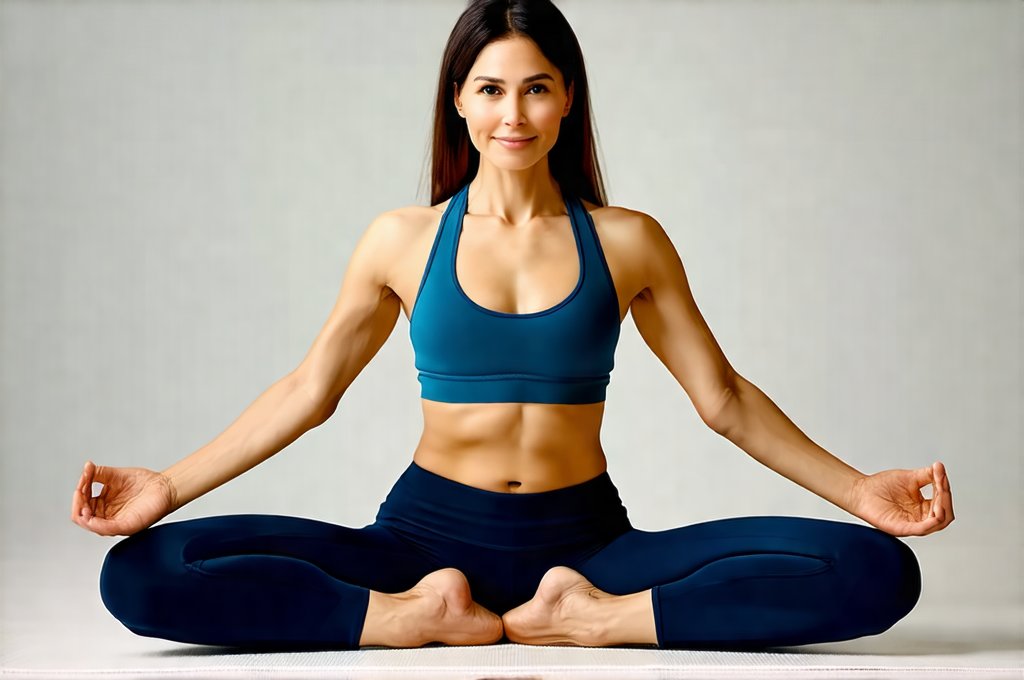Many individuals experience stiffness in their hips, which can impact posture, gait, and overall well-being. Simultaneously, awareness and gentle encouragement of bladder health are often overlooked aspects of holistic wellness. This article explores light yoga flows designed to address both concerns simultaneously – enhancing hip mobility while fostering a mindful connection with the pelvic floor and encouraging healthy bladder function. It’s important to approach these practices with gentleness and self-awareness, listening closely to your body’s signals and modifying as needed. These are not replacements for medical advice or treatment; rather, they offer a complementary practice that supports overall health when integrated responsibly.
Hip stiffness often arises from prolonged sitting, repetitive movements, or simply the natural aging process. Limited hip mobility can lead to lower back pain, discomfort during everyday activities, and reduced range of motion. Gentle yoga flows offer a safe and effective way to restore flexibility and ease in the hips. Simultaneously, many individuals experience unintentional bladder leakage or urgency due to factors such as childbirth, aging, or lifestyle choices. Incorporating mindful movement that gently encourages bladder expansion – without straining – can contribute to improved pelvic floor strength and function. This is about cultivating awareness and gentle support, not forceful exertion. The key is a slow, deliberate practice focused on breath and body connection. If you’re experiencing issues, it’s helpful to understand pain that shifts between bladder and lower back as well.
Hip-Centric Flows for Gentle Release
The hips are a complex joint, and releasing tension requires a multifaceted approach. These flows focus on opening the hip flexors, external rotators, and adductors—areas commonly affected by tightness. We’ll prioritize movements that are accessible to all levels of fitness, emphasizing proper alignment over achieving extreme flexibility. Remember to breathe deeply throughout each pose, allowing your breath to guide your movement and release tension. A foundational principle is interoception – the ability to sense what’s happening inside your body – which becomes crucial when connecting with pelvic floor awareness.
These flows are not about pushing yourself into challenging poses but rather about creating space and softening around the hips. Think of it as an invitation for release, not a demand for flexibility. A good starting point is to dedicate 10-15 minutes to these flows several times a week, gradually increasing the duration and complexity as you feel comfortable. It’s also incredibly beneficial to pair this practice with mindful awareness during daily activities – paying attention to your posture while sitting or walking, for instance. Consider incorporating light exercise ideas that don’t disrupt bladder function into your routine as well.
Focus on engaging core muscles throughout each movement, providing stability and support for the spine. This protects against injury and enhances the effectiveness of the stretches. Finally, always listen to your body; if you experience pain, modify the pose or rest. Modifications are a sign of self-awareness, not weakness.
Integrating Bladder Awareness into Your Practice
The pelvic floor muscles play a crucial role in bladder control and overall pelvic health. However, these muscles can become weakened over time due to various factors. Gentle yoga flows offer an opportunity to re-establish the mind-body connection with this area, encouraging healthy function without strain. We’ll incorporate subtle cues that activate the pelvic floor during specific poses, promoting awareness and strengthening. This is not about actively “holding” or squeezing; it’s about feeling a gentle lift and support.
It’s vital to understand that overly tightening the pelvic floor can be just as problematic as weakness. The goal isn’t to clench but to cultivate a sense of balanced tone – the ability to both contract and release these muscles with ease. This requires mindful attention and practice. We will focus on poses that create space in the pelvis, allowing for gentle expansion without compression, which supports healthy bladder function. If you experience sharp bladder pain during these exercises or at other times, please consult a healthcare professional.
Remember that any changes you notice should be discussed with a healthcare professional, especially if you are experiencing urinary incontinence or other pelvic health concerns. These exercises are intended to complement, not replace, medical treatment.
Gentle Hip Circles & Pelvic Tilts
This sequence is an excellent starting point for cultivating hip mobility and bladder awareness. It begins with gentle movements that warm up the hips and encourage circulation.
- Seated Spinal Twist: Sitting comfortably with your legs extended or crossed, gently twist to one side, keeping your spine straight. Hold for a few breaths, then repeat on the other side. As you twist, notice how it affects your pelvic area and bladder sensation – without judgement, simply observe.
- Knee-to-Chest: Lie on your back with knees bent and feet flat on the floor. Gently draw one knee towards your chest, holding for a few breaths. Repeat with the other leg. This opens the hip flexors and encourages pelvic stability. Focus on breathing deeply into your abdomen as you perform this exercise.
- Pelvic Tilts: While still lying on your back, gently tilt your pelvis forward and backward, creating a small rocking motion. Imagine your pelvis is a bowl filled with water – you’re carefully tilting it to avoid spilling any. This activates the pelvic floor muscles and strengthens core stability. Repeat 10-15 times.
Focus on maintaining relaxed shoulders and neck throughout these exercises. The emphasis should be on gentle movement and mindful awareness of your body.
Cat-Cow with Pelvic Floor Integration
Cat-Cow is a classic yoga pose that promotes spinal mobility, but we can modify it to incorporate pelvic floor awareness. This variation combines hip opening with subtle engagement of the pelvic muscles.
- Starting Position: Begin on your hands and knees, ensuring your wrists are aligned under your shoulders and your knees are directly below your hips.
- Cat Pose (Exhale): As you exhale, round your spine towards the ceiling, tucking your tailbone and gently drawing your navel towards your spine. Imagine you’re lengthening your back with each breath out. Simultaneously, visualize a gentle lift within your pelvic floor – not a clench, but an upward sensation.
- Cow Pose (Inhale): As you inhale, drop your belly towards the floor, arching your back and lifting your chest and tailbone. Allow your hips to soften and release. On the inhale, imagine space expanding within your pelvic region, gently encouraging bladder support.
Repeat this sequence 5-10 times, paying close attention to the subtle sensations in your hips and pelvic area. Avoid forcing the movement; let it flow naturally with your breath.
Supported Bridge Pose & Gentle Release
Bridge pose is a gentle backbend that opens the chest and strengthens the glutes and hamstrings. Adding support allows for a more relaxed experience, facilitating bladder awareness.
- Starting Position: Lie on your back with knees bent and feet flat on the floor, hip-width apart.
- Lift & Support: Gently lift your hips off the floor, creating a bridge shape. You can place a block or bolster under your sacrum (the bony part of your lower back) for added support. This reduces strain and allows you to relax into the pose.
- Gentle Release: As you hold the pose, focus on softening your abdomen and allowing your pelvic floor muscles to gently expand downwards. Visualize a gentle release in the bladder area – not a forceful opening, but a sense of spaciousness. Hold for 5-10 breaths, then slowly lower your hips back to the floor.
This pose is excellent for releasing tension in the lower back and promoting circulation in the pelvic region. Remember to breathe deeply throughout the exercise and adjust the level of support as needed.
It’s crucial to remember that consistency and self-awareness are key. Regular practice, even if it’s just a few minutes each day, can significantly improve hip mobility and promote bladder health. Listen to your body, modify poses as needed, and celebrate small victories along the way. This is a journey of self-discovery and holistic well-being – one that empowers you to connect with your body in a deeper and more meaningful way. Light workouts can also support this process.





















